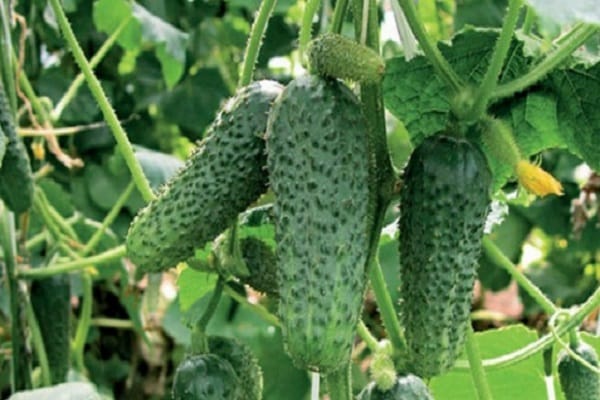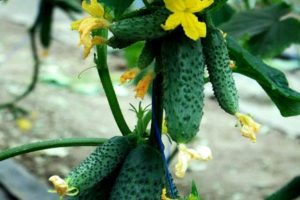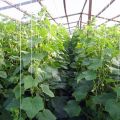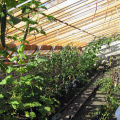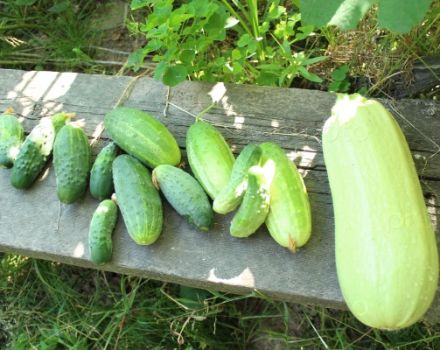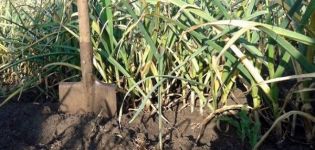Description of the Berendey f1 cucumber variety, features of cultivation and care
What names do amateur gardeners not recognize when choosing a suitable variety of cucumbers. Come across named after fairy-tale characters. We present to your attention the cucumber Berendey f1. Letter f1 indicates that the cucumber variety belongs to the category of hybrid. Berendey is available in the catalog of vegetable plants of the Russian Federation. Breeders recommend it for direct sowing or greenhouse cultivation. This cucumber variety is distinguished by a fairly high yield and resistance to various diseases.
Description of the "fabulous" vegetable
Berendey cucumbers are early ripening hybrids. Bushes are of medium height and medium branching. In the process of maturation, at least three ovaries are formed in the knot. Fruits ripen after about a month and a half after the first shoots appear.

Cucumber fruits grow in a standard cucumber shape, with flat tubercles on the surface, with a uniform green color, 10 to 15 centimeters long and approximately 4.5 centimeters in diameter - in a word, a classic! The average weight of a green cucumber is 150 grams. The pulp is firm, juicy and aromatic. When biting off, the crunch is notable!
The Berendey hybrid is incomparable both fresh and canned. The real king of vegetable salads!

Advantages and disadvantages of a hybrid
A description of a cucumber variety cannot do without listing its strengths and weaknesses. The Berendey f1 hybrid is characterized exclusively from the positive side:
- amazing taste;
- high-yielding;
- attractive in appearance;
- universal for its purpose;
- grown both in the open field and under the film;
- pollinates independently.
The marketable arsenal of fruits is about 15 kilos of cucumbers per square meter of area.
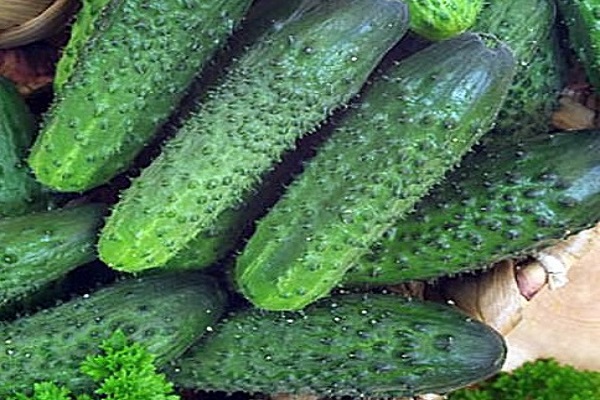
The characteristic of the Berendey variety does not say anything about the fact that it has any disadvantages. Well, except that it belongs to the hybrid category. But this can hardly be seriously considered as a big disadvantage for a cucumber ...
Landing features
Planting of Berendey cucumbers is carried out in two ways - direct sowing and in a greenhouse.
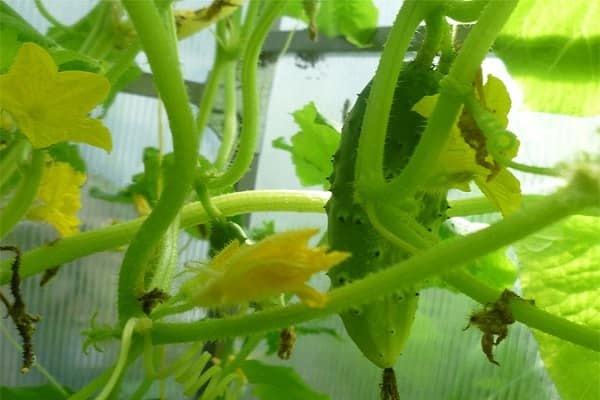
In the beds, cucumbers are planted in the tenths of May. Why is direct seeding good? It significantly reduces the time and energy spent on growing, because in this situation, the seedling stage of development is skipped. The seeds of the variety are characterized by:
- one-dimensionality;
- fast germination;
- efficiency of germination.
Before planting, the seeds are disinfected with ready-made chemicals "Tiram" or "Benomin". It would also be nice to soak the seed in a solution of trace elements for 12 hours on the eve of planting.Cucumber planting scheme: 50 to 50 centimeters, depth: one and a half to two centimeters.

At first, the crops of Berendey are covered with a film to protect against sudden night frosts, and then they are removed when the first shoots appear. With an abundance of sprouted greenery, the seedlings are thinned out.
To obtain a guaranteed high yield, cucumbers are planted for seedlings in the last decade of April. You can get healthy seedlings of cucumbers both at home - on the windowsill and in the greenhouse:
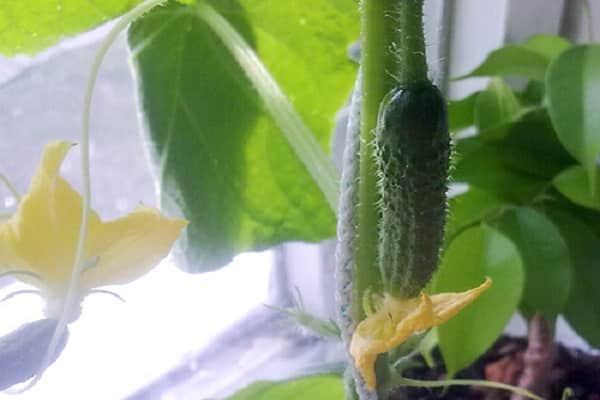
- dry seeds that have undergone preliminary treatment are suitable for sowing;
- the seed is placed in a mixture of two parts of land from the garden, one part of peat and one part of sand;
- Berendey's seeds are immersed to a depth of one and a half centimeters;
- boxes with seedlings are covered with foil and left in a warm place;
- after emergence, the film is removed;
- the unfolding of the cotyledons suggests that the seedlings must be rearranged to the place where the temperature is + 18 instead of + 25.
This is how the Berendey cucumber seedlings are grown.
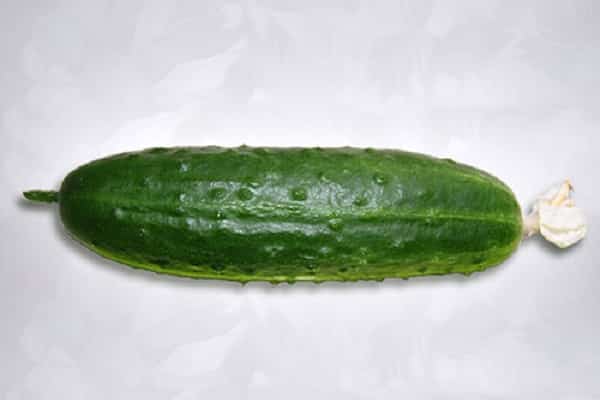
Seedlings need to be watered regularly and a complex mineral fertilizer should be added to the soil once. For a week of transferring seedlings to "free", experts advise to lower the temperature even more, to + 16 - to harden the culture. When the earth warms up under the sun to 18 degrees, you can start moving the seedlings to the beds in the greenhouse. Plants are planted from each other at a distance of one and a half meters. After planting, abundant watering is performed.
Due to the unpretentiousness and the possibility of growing Berendey in shaded places, it is allowed to cultivate the variety on a windowsill, balcony or loggia. However, this should not be abused. Too darkened place may not in the best way affect the shape of future cucumbers: they grow twisted, with small tubercles. In addition, they will have a pale color of a light green hue. If the balcony is on the south side, then you should definitely consider shading for plants.
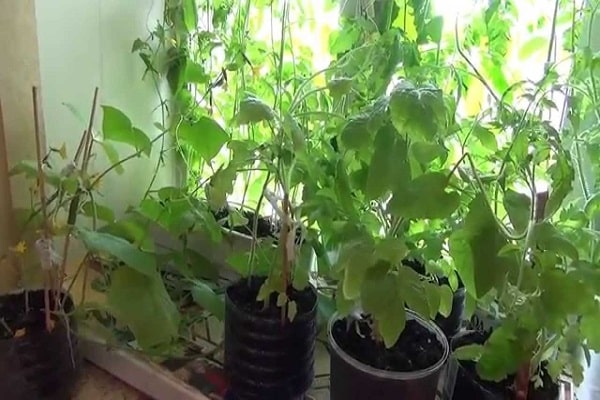
Subject to the proposed conditions, you can collect up to 10 kilograms of cucumbers from each bush per season.
Growing features
Hybrid care is quite traditional:
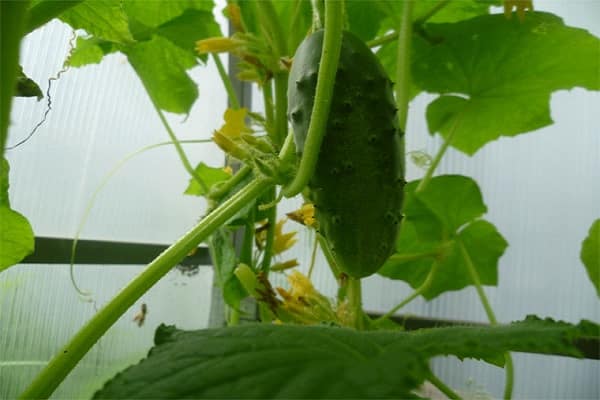
- you need to water it with warm water, preferably at sunset (in the greenhouse, the frequency of watering depends on the temperature inside and outside and the level of illumination);
- it is necessary to loosen the soil weekly;
- when growing cucumbers in ordinary beds, it is not necessary to form plants, and in the greenhouse it is imperative to use trellises.
To increase the yield, the lower lateral shoots are pinched over the second (third) leaf. It is important to carefully inspect the cucumbers daily in order to prevent them from getting sick, and this could not be fixed.

Reviews of vegetable growers
The gardeners are delighted with Berendey f1 cucumber, the reviews are the most complimentary. And, indeed, the hybrid is good for everyone! If you provide the plantings with partial shade, regular watering and proper feeding, then they will thank you with an abundance of magnificent fruits.
Berendey cucumbers grow dense, pimply, with fragrant delicious pulp. Try sowing this hybrid in your area - you'll love it!
